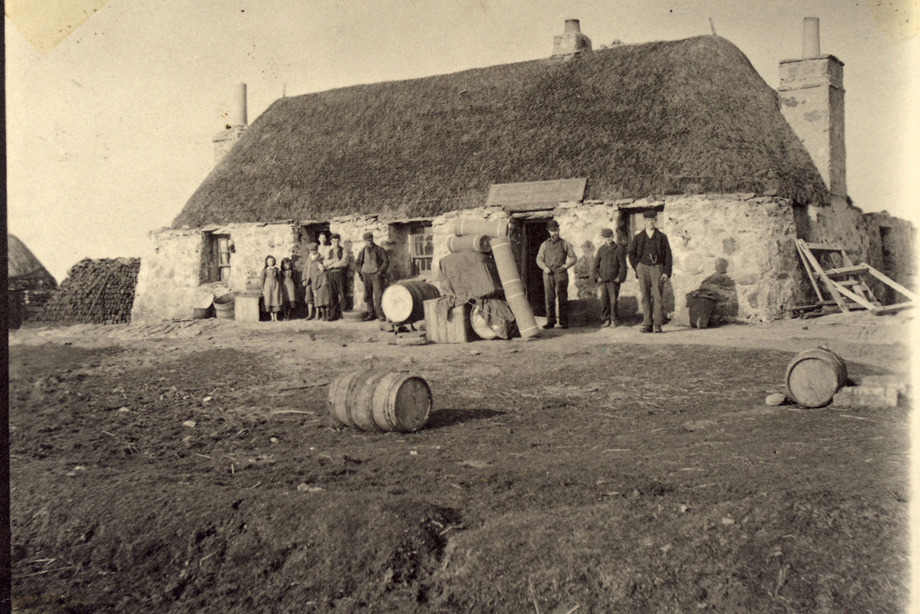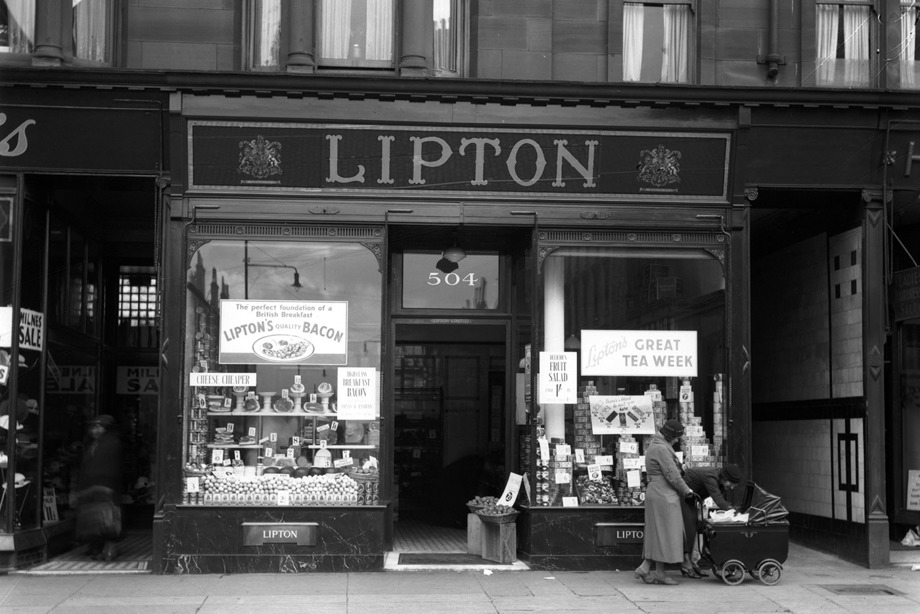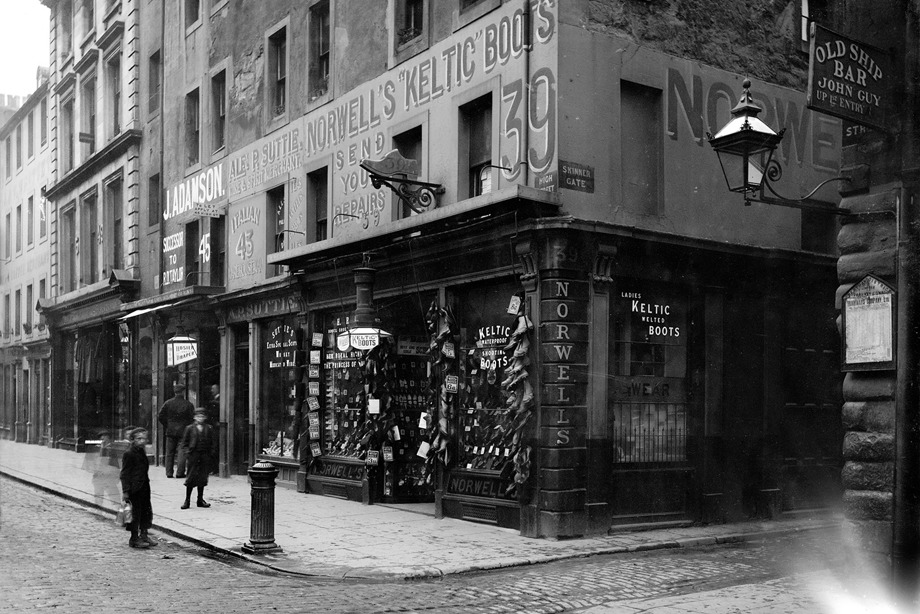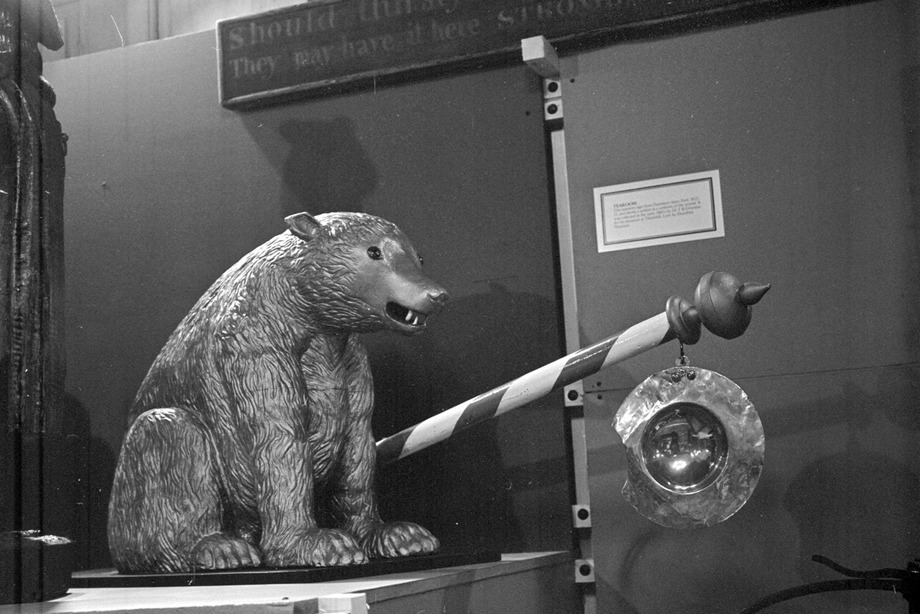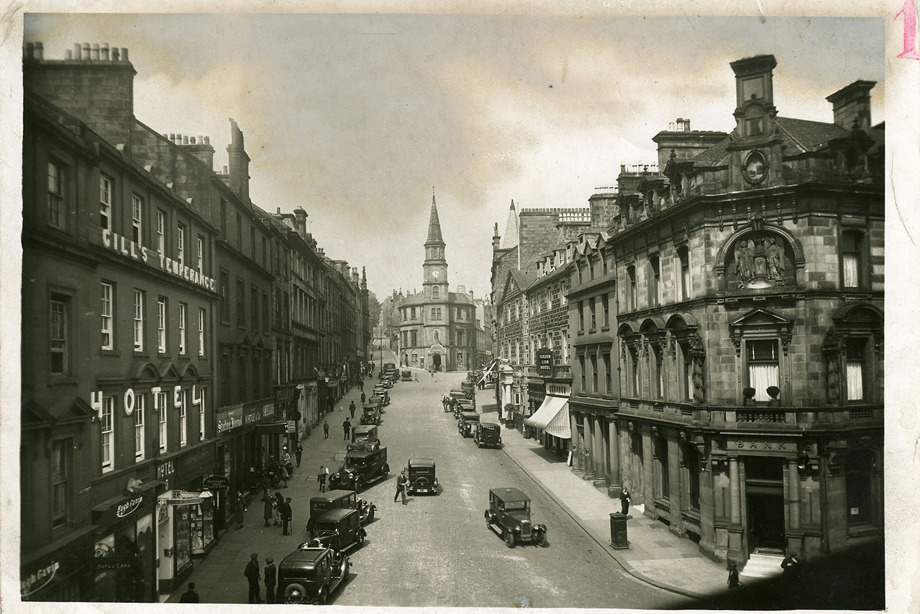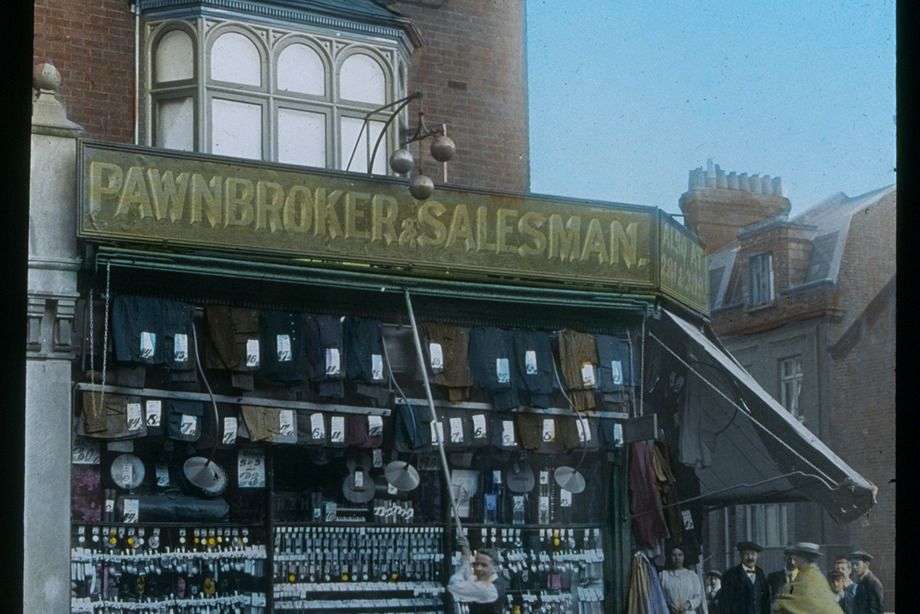In the competitive world of retail, shopkeepers needed ways to stand out from the crowd.
Shopkeepers and designers developed creative ways to advertise their goods.
Attractive signage could draw customers in from the high street.
Post Office in North Uist, Inverness-shire, April 1897
Rural shops rarely required more than a simple signboard to show that they were open for business.
This small country Post Office is found in a thatched croft, a marked contrast to the tall plate glass windows with elaborate displays and advertising of the late Victorian and Edwardian shops in the bigger towns and cities.
The appearance of a photographer has brought out a group of locals, while the various goods at the front of the Post Office may be awaiting delivery to elsewhere on the island.
This archive photo collection of post offices features an array from Scotland's history.
Lipton's Grocers, 504 Dumbarton Road, Glasgow, 1936
In urban areas with greater competition, there was a need to be more visible and more inventive in order to stand out from the crowd.
The large, glass windows in this Lipton's shop show off many of the shops products.
Sir Thomas Lipton was born in Glasgow in 1850. He founded a grocery business in Finniston in 1870 which eventually grew into Lipton's Ltd with a chain of shops by 1885.
He acquired tea and rubber estates and owned racing yachts.
Lipton was knighted in 1898 and made a Baronet in 1902.
These archive photos of Lipton's shops show shops across several locations.
Norwell’s Boot Shop, Perth High Street, 1880s
Techniques such as shadow lettering, elaborate Victorian designs and script fonts were developed by signwriters who created their own distinctive signature. These would have been locally recognisable.
This photo of Norwell’s Boot Shop, Perth, shows the Victorian preference for covering facades with lettering.
Stories from Scotland's shops
Learn the architecture and materials used in creating the distinctive shopfronts which line Scotland's towns and cities and see what some local shopfront owners have to say about their shopfronts today in this short film.
Golden Bear with Barber’s Pole, Edinburgh, 1975
In addition to signboards, three dimensional emblems were sometimes fitted to shopfronts.
Large and colourful, they depicted items associated with the business. Some such as the mortar and pestle of a pharmacy, had a clear meaning, whilst others were more obscure, such as a bear for a barber’s shop, as bear oil was used to grease hair.
This Golden Bear with barber’s pole was photographed at the exhibition of old Edinburgh shop signs in November 1975.
The pole was rescued from the demolition site of St James Square in the 1960s. It was situated on East Register Street and was suspended over the entrance to the barbers shop.
These archive photos of shop signs show more of Scotland's advertising history.
King Street, Stirling, 1930s
Hats have been a fashionable clothing item for centuries. Quality hats were a sign of wealth and status. Hatters identified their shops with different emblems, including a hat and feather, a cap in hand or a beaver.
Beaver pelts were highly prized to make felt for hats. Beavers were found in Scotland until the early 16th century, but were hunted to extinction.
Hatters then sourced beaver fur from Scandinavia, and later from North American fur traders.
By the late 19th century, silk rather than beaver fur was the preferred material for making hats.
In this photograph, the beaver can be seen above the shop on left side of the street.
From aerial photos, to street sculptures, explore Stirling in the archives.
Pawnbrokers, Date and Location Unknown
These three golden balls are the traditional sign of a pawnbroker's shop. They are one of the few old shop signs still used today.
In the 19th century shops used easily identifiable signs for attracting the attention of the public. Tobacconists and snuffmakers had brightly coloured figures of Moors and Turks, shoemakers had carved boots, and chemists, mortars and pestles.
Traditional Shop Signs Today
Signwriting is a craft that requires skill in the spacing of letters, colour and design to reflect the individuality of every shop.
Watch how it’s being used to bring colour and style to Scotland’s high streets today.
Scotland's Historic Shops continued
Continue your exploration of Scotland's extraordinary historic shops.

